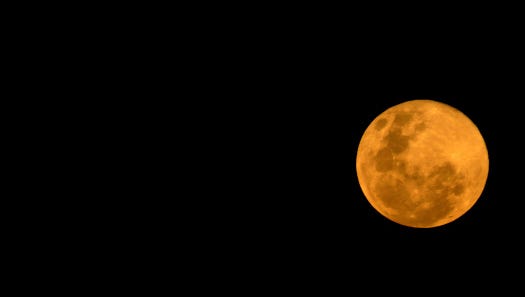Keep your eyes to the sky Friday to catch a glimpse of the Strawberry Moon, which will be visible from moonrise and moonset in North America.
The moon projects to be "full" at 3:12 p.m. EDT Friday, according to NASA, but stargazers will be able to see the Strawberry Moon in all its glory earlier that day or later at night.
To see it yourself Friday morning, make sure to position yourself with a clear view of the western part of the sky at moonset, which, for many Americans, will be quite early.
Possibly a more convenient time to see the Strawberry Moon comes later that day, at moonrise, when you should look towards the eastern part of the sky to catch it.
The Old Farmer's Almanac has an online tool to help you find out when moonrise and moonset will occur in your area. Try searching your city or ZIP code here.
Its low, shallow path across the sky makes the Strawberry Moon the most colorful moon of the year, said Bob Bonadurer, director of the Milwaukee Public Museum's planetarium.
The June full moon's arc across the sky means moonlight must travel through more of the Earth's atmosphere, which gives it an orange or yellow tint.

This year's Strawberry Moon brings with it a penumbral lunar eclipse, which occurs when the Earth blocks some of the light travelling from the sun to the moon, causing the moon to appear slightly darker.
North America, however, will be left in the dark on this eclipse. It will only be visible from parts of South America, Europe, Africa, Asia and Australia, a NASA release said.
Why is it called a Strawberry Moon?
The name Strawberry Moon derives from the Algonquin Native American tribes in eastern North America, who used its appearance as a signal to gather ripening wild strawberries, according to the Old Farmer's Almanac.
In Europe, alternative names include the Honey Moon, the Mead Moon or the Rose Moon.
Full moons of 2020
Here are all the nights you can see a full moon this year, along with one of their Native American names, according to the Old Farmer's Almanac.
- Jan. 10 - Wolf moon and a penumbral lunar eclipse (not visible in U.S.)
- Feb. 9 - Snow moon
- March 9 - Worm moon (supermoon)
- April 7 - Pink moon (supermoon)
- May 7 - Flower moon (supermoon)
- June 5 - Strawberry moon and a penumbral lunar eclipse (not visible in U.S.)
- July 5 - Buck moon and a penumbral lunar eclipse
- Aug. 3 - Sturgeon moon
- Sept. 2 - Harvest moon
- Oct. 1 - Hunter's moon
- Oct. 31 - Blue moon
- Nov. 30 - Beaver moon and a penumbral lunar eclipse
- Dec. 29 - Cold moon



No comments:
Post a Comment